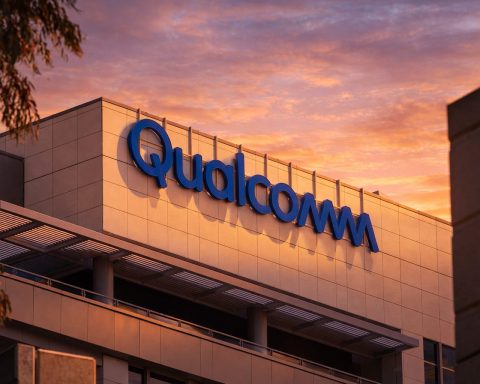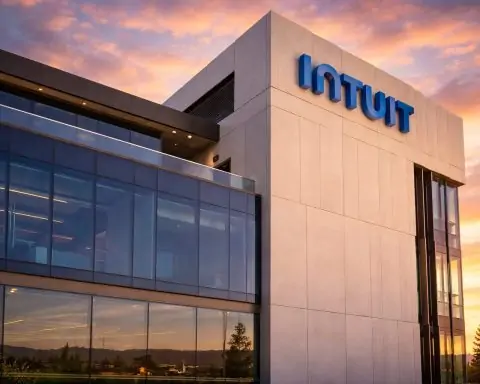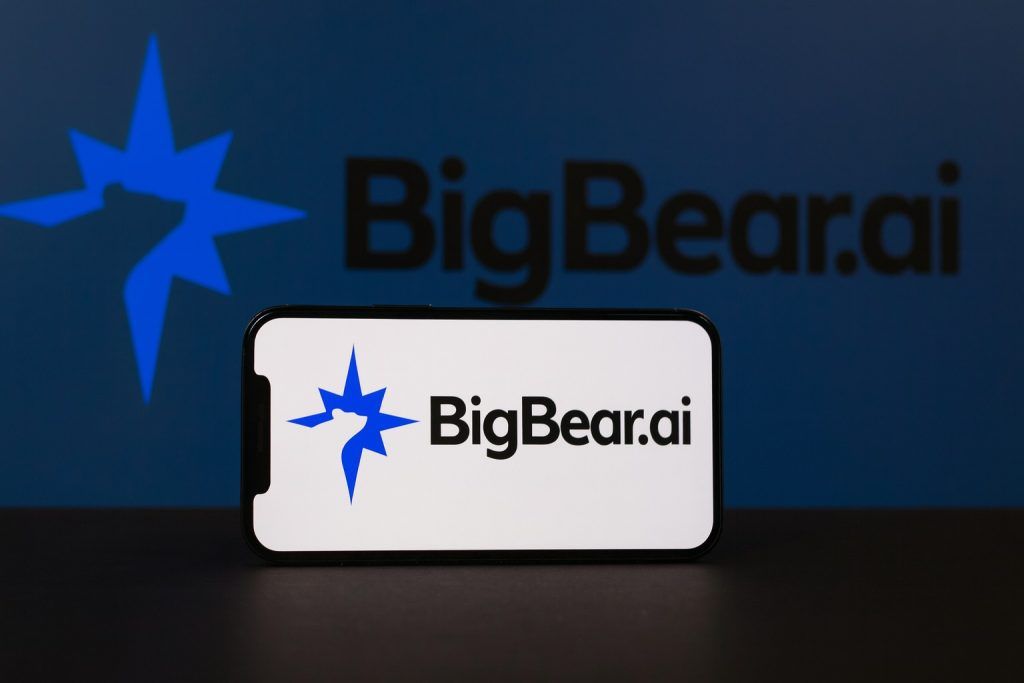- Stock Surge: IBM is trading around $280 (closing $281.28 on Oct. 17) after hitting multi-year highs near $296 in late September [1] [2]. The share price is up roughly 28% year-to-date, far outperforming the S&P 500’s gain [3]. (A Dow Jones report noted IBM led the Dow with a +1.5% jump on Oct. 7 after news of the Anthropic AI deal [4].)
- Key Partnerships & Products: In early October IBM announced several major deals: a cloud partnership with Bharti Airtel (Oct. 15) to expand IBM’s cloud services in India [5]; a multi-cloud AI collaboration with AMD (Oct. 1) to build a supercluster for AI startup Zyphra [6]; and integration of Anthropic’s Claude AI into IBM software (Oct. 7) [7]. IBM also unveiled new enterprise AI tools: the Watsonx Granite 4.0 model suite (Oct. 2) with much lower memory needs [8], and three AI “agents” for Oracle Fusion Applications (Oct. 16) designed to automate tasks in finance and supply chains [9].
- Acquisition Move: IBM agreed on Oct. 15 to acquire Cognitus, a Dallas-based SAP consulting firm, bolstering its AI-driven enterprise software services [10]. This deal (details undisclosed) strengthens IBM’s SAP capabilities in regulated industries.
- Environmental Initiative: On Oct. 17 (GITEX Global 2025), IBM signed a cooperation with the UAE Ministry of Climate Change and Environment to develop AI solutions for sustainability (e.g. fisheries monitoring, automated certificate checking) [11].
- Upcoming Earnings: IBM will report Q3 2025 results on Oct. 22 (after market close) [12] [13]. Analysts expect continued mid-single-digit revenue growth, with consensus EPS around $3.00 for the quarter [14] [15]. The Oct. 22 call will be closely watched given the high stock valuation.
- Analyst Outlook: Wall Street’s consensus is cautiously neutral. The average 12‑month price target is roughly $270–$286 [16] [17] (near current levels), reflecting a mixed “hold” rating. Bullish forecasters (e.g. Wedbush, Bank of America) have targets up to $310–$325, betting on successful AI/cloud execution [18], while skeptics (UBS, JPMorgan) warn of lofty valuations and see fair value closer to ~$198 [19] [20]. One market strategist quipped that after IBM’s rally “there’s just not a lot of room to miss” on execution [21]. Overall, analysts project moderate growth – for example, free-cash-flow guidance was recently raised above $13.5B [22] – but most see limited upside from here unless IBM’s AI and cloud initiatives significantly outperform expectations [23] [24].
- Dividend & Valuation: IBM pays an annual dividend of $6.72 ($1.68 quarterly), a yield around 2.3%, and has a streak of 29 consecutive years of dividend raises (Dividend Aristocrat) [25]. Its price/earnings (P/E) ratio is about 45x expected earnings, well above historical norms, indicating high growth expectations [26] [27]. One valuation analysis finds the stock is roughly “fairly priced” if IBM hits its growth and margin targets (consensus fair value ~$281) [28]. Bearish analysts caution that competition from hyperscale cloud providers and legacy headwinds could pressure IBM’s outlook, implying much lower targets (~$198) if those risks materialize [29] [30].
Recent Stock Rally Driven by AI and Quantum News
IBM’s stock has rallied sharply in fall 2025. It closed around $279 on Oct 13 [31], just shy of its late-September peak near $296 [32]. Investors point to IBM’s pivot to AI, cloud and quantum computing as catalysts. In late September, the company announced a first-of-its-kind quantum computing trial with HSBC, which used IBM’s quantum processor to improve bond-trading forecasts by 34% [33]. HSBC’s Philip Intallura said the trial is “a tangible example of how today’s quantum computers could solve a real-world business problem at scale” [34]. The news (Sept. 25) helped fuel IBM’s stock jump into October.
In addition, IBM’s recent financial results have exceeded expectations. For Q2 (ended June), IBM reported revenue of $16.98 billion and EPS $2.80 – both beating consensus [35]. The company even raised its full-year revenue growth guidance. This strong execution (powered by demand for AI-enabled mainframes and hybrid cloud) underpins investor optimism. Still, some worry about the lofty valuation: as Synovus Trust’s Dan Morgan noted after Q2, with shares already ~30% up, “there’s just not a lot of room to miss” on future earnings [36].
Big Partnerships and Product Launches This Week
Several announcements in mid-Oct have kept IBM in the spotlight:
- Airtel Cloud Partnership (Oct. 15): Reuters reports IBM will offer its cloud, AI and consulting services via India’s Bharti Airtel cloud platform [37]. The deal includes establishing new cloud regions in Mumbai and Chennai to meet local data-residency needs, expanding IBM’s footprint in a key emerging market.
- Oracle AI Agents (Oct. 16): IBM announced three new AI “agents” built with Oracle’s AI Agent Studio for Fusion Applications [38]. These bots (for intercompany agreement review, sales order entry, and requisitions-to-contract) help automate enterprise workflows. IBM is also developing additional agents for HR and supply chain using its Watsonx Orchestrate platform [39]. IBM’s Neil Dhar (Global Managing Partner, Consulting) said the partnership “combines our collective enterprise AI and business transformation expertise” to “drive productivity, agility and innovation” [40].
- Anthropic AI Integration (Oct. 7): IBM and AI startup Anthropic struck a strategic partnership to infuse Anthropic’s Claude large language model into IBM’s developer tools and products [41]. The first rollout is an AI-driven coding environment that reportedly boosted developer productivity by ~45%. After this news, IBM’s shares jumped several percent (it led the Dow on Oct. 7 [42]). IBM software chief Dinesh Nirmal said the deal “enhances our software with advanced AI capabilities” while keeping the governance and security clients expect [43].
- Watsonx Granite 4.0 (Oct. 2): IBM launched its latest Watsonx enterprise AI model family, Granite 4.0, featuring a new architecture that cuts memory needs by ~70% for long-context AI tasks [44]. The models are open-source and ISO-certified for enterprise use, reflecting IBM’s push into secure, large-scale AI services.
- AMD Supercomputer Tie-up (Oct. 1): IBM announced a collaboration with AMD and AI startup Zyphra to build one of the largest AI training supercomputers (100% AMD GPU-based) in IBM Cloud [45]. Zyphra’s “Maia” LLM will train on this cluster, underscoring IBM’s expanding role in AI infrastructure.
These developments highlight IBM’s strategy of combining AI, cloud and quantum to attract clients. As one analyst put it, IBM is “a quiet way to play AI and quantum” – it often doesn’t grab headlines but is steadily building technology [46].
Analyst Commentary and Forecasts
Wall Street’s take on IBM is mixed. Most analysts rate it around Hold/Neutral and see limited upside from current levels. For example, MarketBeat notes roughly 8 out of 17 analysts rate IBM as Buy (7 Hold, 2 Sell) with a consensus 12-month target near $286 [47]. A SimpliWall Street analysis likewise finds the “fair value” around $281, essentially the current price [48]. Several large firms have that tone: Goldman and Stifel have buy ratings around $310 targets, BMO at $300, but Morgan Stanley and Bernstein maintain neutral calls (Sacconaghi’s $280 target) [49] [50].
Optimistic analysts cite IBM’s AI/cloud momentum. Bank of America’s Wamsi Mohan raised his target to $310 and Wedbush to $325 (both Outperform) in September [51] [52], arguing that if IBM continues beating expectations and landing big AI deals, shares could go higher. On the other hand, skeptics highlight IBM’s valuation. Some point out the forward P/E (~45x) is rich for a midsize tech player, and that hyper-scale cloud giants could outpace IBM in key markets. As SimplyWallSt observes, a bearish case (factoring in intense cloud competition and legacy constraints) values IBM as low as $198 [53] [54].
Investor advice is cautious. Fidelity notes IBM’s revenue growth (~7.7% last quarter) is solid [55], but its long history and large size mean growth rates will likely remain modest. Dividend investors find IBM attractive for yield (2.3%) and safety (29-year raise streak) [56]. Growth investors, by contrast, want to see more proof that IBM’s AI and quantum bets translate to rapidly rising profits.
Outlook: Upcoming Earnings & Long-Term View
IBM’s Q3 earnings on Oct. 22 will be a key catalyst. Analysts expect continued EPS growth (around $3.00) and low-single-digit revenue growth [57]. Management has already guided that 2025 revenue should grow at least mid-single digits on a constant-currency basis. However, the bar is high: with IBM’s stock already near record levels, any hint of a miss could trigger a pullback. As Dan Morgan warned, late-comers chasing the rally have “just not a lot of room to miss” [58].
In the longer term, IBM’s fate hinges on whether its ambitious bets pay off. The company is doubling down on hybrid cloud (via Red Hat/OpenShift), AI software, and quantum research. If these become solid profit drivers, bulls argue $300+ targets are justified. If not, IBM could revert closer to slow-growth tech norms. For everyday investors, a balanced view is wise: IBM offers strong cash flow and yield, and likely won’t decline like a volatile tech stock, but it also faces stiff competition. As one market note put it, IBM’s transformation story is compelling, but with its high valuation, “investors should tread carefully and watch upcoming results closely.”
Sources: Industry reports and press releases from IBM (Airtel cloud partnership [59], Cognitus acquisition [60], Oracle AI agents [61], Anthropic deal [62]), Reuters and Dow Jones news (HSBC quantum trial [63], Anthropic partnership [64]), financial analysis sites (TS2.tech [65] [66], MarketBeat [67], SimplyWallSt [68]), and expert commentary [69] [70].
References
1. ts2.tech, 2. www.investing.com, 3. ts2.tech, 4. www.investopedia.com, 5. www.reuters.com, 6. ts2.tech, 7. newsroom.ibm.com, 8. ts2.tech, 9. newsroom.ibm.com, 10. newsroom.ibm.com, 11. www.tradingview.com, 12. ts2.tech, 13. ts2.tech, 14. ts2.tech, 15. www.investing.com, 16. ts2.tech, 17. www.marketbeat.com, 18. ts2.tech, 19. ts2.tech, 20. simplywall.st, 21. www.reuters.com, 22. ts2.tech, 23. www.reuters.com, 24. simplywall.st, 25. ts2.tech, 26. ts2.tech, 27. www.reuters.com, 28. simplywall.st, 29. simplywall.st, 30. simplywall.st, 31. ts2.tech, 32. ts2.tech, 33. www.reuters.com, 34. www.reuters.com, 35. www.reuters.com, 36. www.reuters.com, 37. www.reuters.com, 38. newsroom.ibm.com, 39. newsroom.ibm.com, 40. newsroom.ibm.com, 41. newsroom.ibm.com, 42. www.investopedia.com, 43. newsroom.ibm.com, 44. ts2.tech, 45. ts2.tech, 46. www.insidermonkey.com, 47. www.marketbeat.com, 48. simplywall.st, 49. www.marketbeat.com, 50. ts2.tech, 51. ts2.tech, 52. ts2.tech, 53. simplywall.st, 54. simplywall.st, 55. www.marketbeat.com, 56. ts2.tech, 57. ts2.tech, 58. www.reuters.com, 59. www.reuters.com, 60. newsroom.ibm.com, 61. newsroom.ibm.com, 62. newsroom.ibm.com, 63. www.reuters.com, 64. www.investopedia.com, 65. ts2.tech, 66. ts2.tech, 67. www.marketbeat.com, 68. simplywall.st, 69. www.reuters.com, 70. newsroom.ibm.com







